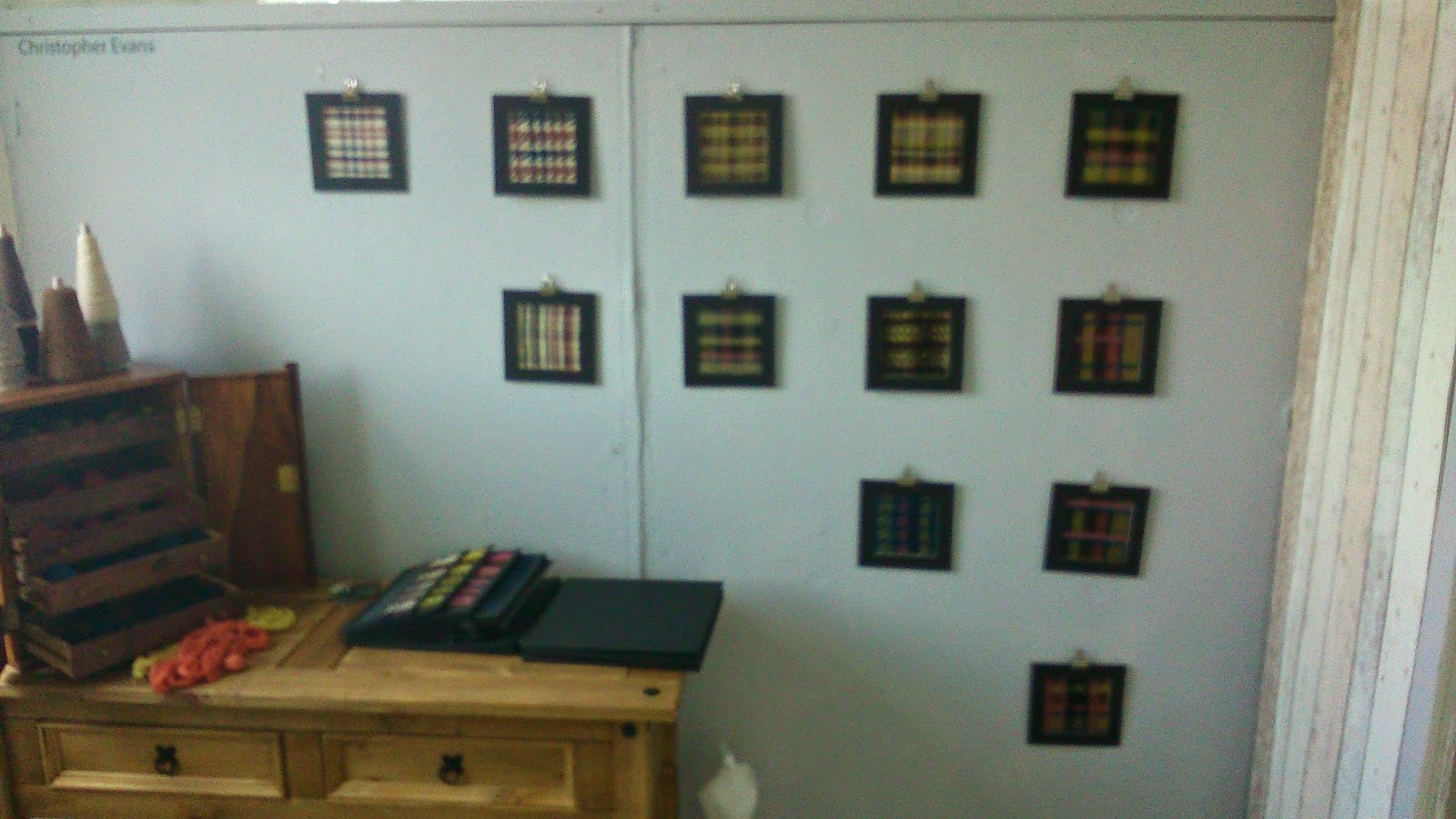I’m Christopher, a recent Textile Design Graduate of Bath School
of Art and Design, and Ancient Textile Researcher who is a regular volunteer.
During the past two years here at the Roman Baths, the building and its
collection has provided a wonderful wealth of inspiration for my work.
I am a keen student of both history and design, constantly
looking for ways to combine the two subjects coherently; with the help of the
Roman Baths I have successfully discovered my niche as an Ancient Textile
Researcher. During the final year of my degree, the ‘Developing Textile design’
module gave me the opportunity to produce a collection of woven textile samples
inspired by Roman mosaics.
Using a variety of different mosaics, to explore the geometric
patterns of Roman mosaics, to develop a series of ‘colour and weave’ patterns
to weave cloth samples. The mosaics include two from the Roman Baths
collection, the geometric mosaic floor from Weymouth House, Bath and the mosaic
from the Keynsham Roman Villa. |
| Exploring Geometric patterns: the Weymouth House mosaic, now in store |
Through a series of observational drawing I broke down the
mosaics into re-occurring patterns, developing them into repeatable weave
blocks to weave the samples.
 |
| Observational drawing of the mosaic |
Preparing for my Graduate Show, I returned to the Roman Baths
again, this time taking a series of photographs of the exterior of the
building, while there was scaffolding all over the building to do maintenance
of the Pump Room roof. I used the juxtaposition of the scaffolding over the
windows and columns of the building, to create a series of tartans and checks.
This was done by breaking them down into blocks of colour and lines created by
the overlaying features of the building.
Alongside the module I experimented with natural dyes, to
discover the effect of dyeing natural coloured wool on the depth of colour
produced during the dye process. Trying to keep to similar colours to what
would have been available to the Romans; therefore I used Madder (Rubia
Tinctorum), Weld (Reseda Luteola) and Indigo (Indigofera
Tintoria).
NB. Even the chalk used in the dye process, is from the Baths
(used in conservation, as sacrificial mortaring in the pavement around the
Great bath.)
The module concluded with the presentation of my work in the
Textile Design Degree Show at Bath School of Art and Design in June 2014, where
I created a gallery space, that combined aspects of research and design.
 |
| Final Degree Show |
To see more of my textile design work and/or my ancient textile
research, you can find me on my blog: Christopherleedesigns.wordpress.com
I



















